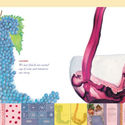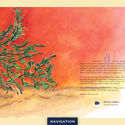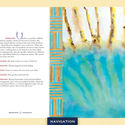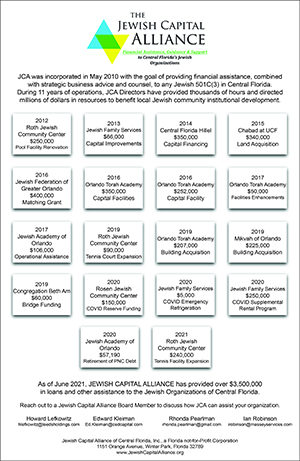Bronfman haggadah enters the digital world in time for Passover

Bronfman Associates
Illustrator Jan Aronson's depiction of the burning bush episode in the app for The Bronfman Haggadah.
In the Exodus story, Moses decides to rescue his people after he hears God speak to him through the burning bush. But when New York City-based artist Jan Aronson imagined the famous episode in which Moses must decide which path to take in life, she didn't see a magic fire, but rather the broiling sun rising and shining on the desert brush. In that moment of meditation, Moses heard the voice within himself that told him to go confront Pharaoh.
That is just one of the inspirations behind the illustrations that Aronson included in The Bronfman Haggadah, a collaboration with her recently deceased husband, the renowned Jewish philanthropist Edgar Bronfman. The original hard-cover book will be released as an app for the iPhone and iPad in March, in advance of Passover.
The app version takes the themes of the book to a digitial level. It includes video interviews with Bronfman and Aronson, narration, animation, and singing of the Passover songs by actors. The Exodus story does not appear in traditional haggadahs, but it is told in the Bronfman hagaddah. The story is narrated in the app; using animation, it shows the basket with baby Moses moving down the river.
"We get a sense of just how monumental it was that this baby was saved," Dana Raucher, the executive director of the Samuel Bronfman Foundation, told JNS.org. Edgar Bronfman and Aronson wanted "to get this app out to audiences that are not necessarily visiting bookstores or buying hardcover books," according to Raucher.
"They were mostly thinking of younger audiences, which this book is very much geared to, people who are transient in their lives, living in college dorms, moving from city to city, and not necessarily lugging heavy books with them," she said. "However, they are curious about the Jewish tradition... redefining certain rituals, and in general just taking an open and expansive look at what the Jewish tradition tells us that is relevant in the modern day."
Bronfman and Aronson worked on the hardcover hagaddah over many seders, after Bronfman had felt dissatisfied with the texts of traditional haggadahs. He decided to write his own haggadah. Aronson was enlisted to illustrate the book.
"Edgar brought not only the story of the Passover, and what's usually in the traditional seder, but he went beyond that. He talked about lessons of justice, equality and ethics in his haggadah and often quoted texts from all sorts of people," Aronson told JNS.org.
Bronfman and Aronson also espoused a humanist view of Judaism that favors godliness, or living an ethical life, over the idea of the supernatural God.
"This haggadah is written for a post-denominational world, a post-gender world," Aronson said. "I think what Edgar (Bronfman) would say is that he is trying to appeal to the Jew who is not affiliated with any particular branch of Judaism. I would like to appeal to all Jews."
Aronson believes there are "many ways to be a Jew" and that almost every Jew "is a pick-and-choose Jew."
"We need to create an environment that every Jew is welcomed into the tent," she said. "Just because you don't believe in a supernatural God doesn't mean you don't have faith, [which is] living an ethical life, where you give back to society [and] do unto others as you wish them to do unto you."
In fact, Aronson said she has given the Bronfman haggadah to plenty of her non-Jewish friends, who have loved it. But she says the haggadah probably does not appeal to strictly observant Orthodox Jews.
"The app allows the user to take a more in-depth look at some of the ideas and images that are present in the Bronfman Hagaddah," Raucher said. One can use it in" pre-seder preparation" or by "learning about the seder and the traditions of the seder" during the dinner portion, she said.
For instance, in the haggadah, Aronson illustrated a biblical map. "There are many people who do not have a reference as to where certain places were or what the area really looked like in biblical times," she said.
Aronson added that she and Bronfman questioned why the traditional seder requires that we open the door for the Prophet Elijah near the end of the service.
"Certainly we should open our door to the stranger at the beginning of the service when the children are most alert, when they are excited about being there, when the lessons of opening the door to the stranger are going to be the most welcomed," she said. "And why should we give the stranger the leftovers? Let's bring him in at the very beginning. That's another big difference in the Bronfman haggadah."
According to Amalyah Oren, the communications cirector of the Samuel Bronfman Foundation, the app's narration gives it an entertainment-style feel for people who want to experience the haggadah in a more theatrical way.
"It's a really good tool for learning the tunes of the songs beforehand, or if you just need help accompanying during the actual seder," Oren told
JNS.org.
There are also families who conduct a do-it-yourself seder by veering from the traditional order of event and asking a lot of their own questions at the table. There is a glossary in the Bronfman haggadah app that doesn't exist in the hardcover book, allowing users to look up information on various topics.
"By having an app at the table, you are connected to the Internet and you can kind of bring [a] third dimension to the conversation," she said.

Bronfman Associates
Illustrator Jan Aronson's depiction of the river on which baby Moses floated in a basket, as seen in the app for The Bronfman Haggadah.
Aronson, originally from New Orleans, created all the original illustrations in the hardcover haggadah by hand with watercolors. But the app can be a more dynamic and interactive experience, she explained.
"As you turn the page [in the app] you might see the wine glass being filled with wine," she said. "You might see the lights flicker from the candles being lit at the very beginning of the service. You might see a fish circling the page instead of it being static."
"You're taking a traditional book and making it digital, [so] instead of turning a page you swipe it," Aronson added. "The joy of it will be revealed as people use it."
Egdar Bronfman, Aronson's partner in life and on the haggadah, died in December 2013. Aronson said she cherishes the fact that she had the chance "to create something as a couple... to be able to collaborate with him in the last years of his life."












Reader Comments(0)